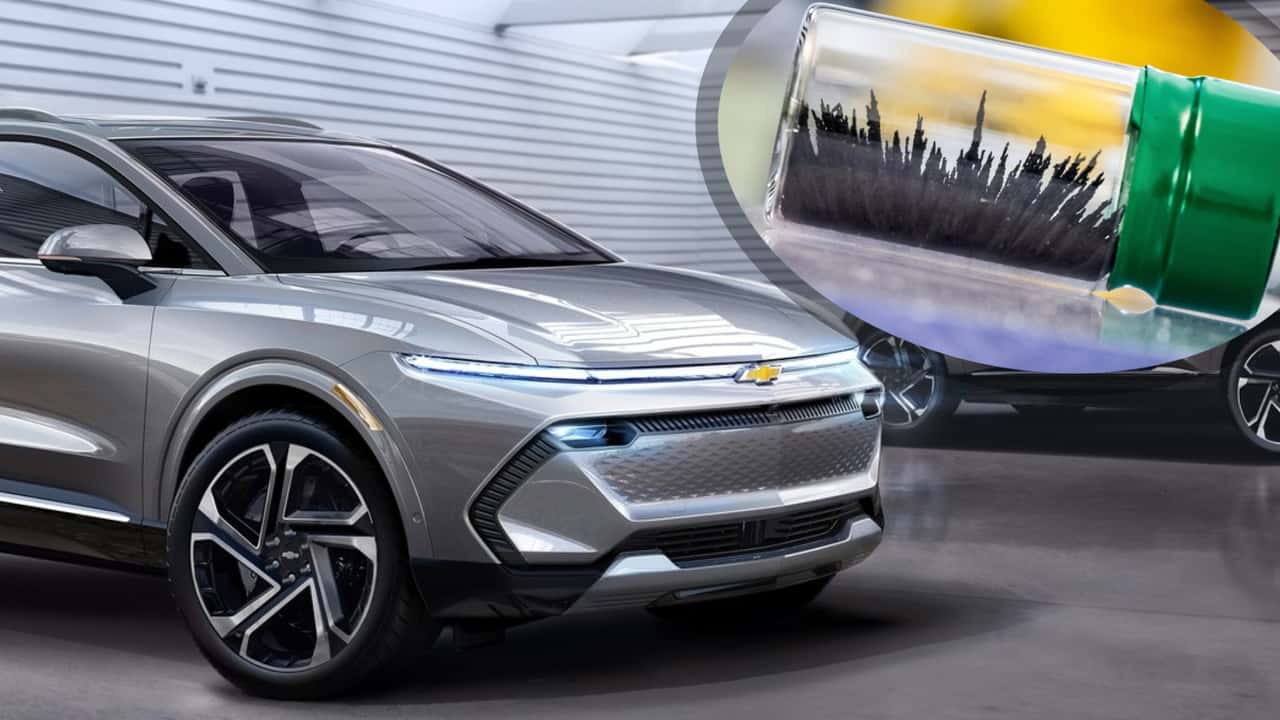General Motors (GM) has partnered with US startup Niron Magnetics to develop “sustainable” magnets for electric vehicle (EV) motors. The magnets will be made from iron nitride, eliminating the need for rare-earth minerals that are typically used in magnets. These minerals are difficult to obtain, expensive, and often produced overseas. By using iron nitride magnets, GM aims to reduce costs, minimize environmental impact, and localize its EV supply chain in North America. The technology promises improved temperature stability and could be a game-changer for GM’s future EV drivetrains. Currently, around 90% of permanent magnet development relies on China, posing challenges for automakers trying to diversify their supply chains. The partnership with Niron Magnetics allows for manufacturing in the US and other global locations, using abundant and sustainable raw materials. The announcement highlights GM’s commitment to electric vehicles and its efforts to overcome production delays and negative headlines. However, no timeline was provided for when the new magnets will be integrated into GM’s EVs.
Future Electric Vehicles: GM Aims to Utilize ‘Clean Earth Magnets’
Introduction:
As the world shifts towards sustainable transportation, automakers are constantly striving to innovate and improve the technology behind electric vehicles (EVs). General Motors (GM) is one such industry leader that is taking significant steps forward in creating cleaner and more efficient EVs. One of their recent advancements involves incorporating ‘clean earth magnets,’ a breakthrough in magnet technology, into their future electric vehicles. This article will explore the potential impact and benefits of GM’s move towards utilizing clean earth magnets in their EVs.
Understanding Clean Earth Magnets:
Traditional permanent magnets are made from rare-earth elements like neodymium, praseodymium, and dysprosium. These elements come with their fair share of environmental and ethical concerns. Mining rare-earth elements often leads to significant environmental degradation, including habitat destruction and water pollution. Additionally, their production involves a complex refining process that results in substantial greenhouse gas emissions.
Clean earth magnets, on the other hand, offer a more sustainable alternative. They are mainly made from abundant and environmentally friendly materials such as iron, nitrogen, and boron. By eliminating or reducing the need for rare-earth elements, automakers like GM can significantly reduce the environmental footprint associated with magnet production.
Positive Environmental Impact:
By adopting clean earth magnets, GM can make substantial contributions towards reducing carbon emissions in the transportation sector. As electric vehicles become more mainstream, increased production will lead to a surge in demand for magnets for various components like motors and generators. By utilizing clean earth magnets, GM will ensure that this increased demand does not place a burden on the environment, as the production of rare-earth magnets currently does. This move will contribute to the overall sustainability of the electric vehicle industry and align with global efforts to combat climate change.
Improved Performance and Cost Efficiency:
Besides their positive environmental impact, clean earth magnets also offer performance and cost advantages. These magnets display better temperature stability, improved corrosion resistance, and enhanced magnetism compared to their traditional counterparts. This translates to improved efficiency, increased power output, and extended lifespan of electric motors and generators in EVs. Moreover, the more abundant materials used in clean earth magnets are generally cheaper than rare-earth elements, potentially leading to cost savings for automakers and consumers alike.
Reduced Dependence on Global Supply Chains:
Another significant advantage GM gains by utilizing clean earth magnets is reduced dependence on global supply chains for rare-earth elements. The scarcity of these elements, which are primarily sourced from China, has led to concerns about potential supply disruptions and geopolitical tensions. By shifting towards clean earth magnets, GM can mitigate these risks and achieve greater independence in sourcing critical components for their EVs, ensuring a more stable and reliable supply chain.
Challenges and Future Outlook:
While the adoption of clean earth magnets is undoubtedly a step in the right direction, there are still hurdles to overcome. The production processes for clean earth magnets are relatively new and less mature than those for traditional rare-earth magnets. Therefore, their scalability and commercial viability must be thoroughly tested and optimized to ensure large-scale adoption. Additionally, as demand for clean earth magnets grows, there will be a need to ensure ethical mining practices for the abundant materials used, to avoid replicating the environmental and social issues associated with rare-earth mining.
Conclusion:
As the world seeks sustainable solutions to combat climate change, General Motors’ commitment to incorporating clean earth magnets into their future electric vehicles sets a commendable precedent for the automotive industry. By reducing environmental impact, improving performance and cost efficiency, and mitigating supply chain risks, GM is poised to play a crucial role in driving the widespread adoption of more sustainable and efficient EV technology. The long-term success of clean earth magnets ultimately depends on collaborative efforts, including further research, development, and ensuring responsible sourcing practices, to realize the full potential of cleaner, greener, and more powerful electric vehicles.

